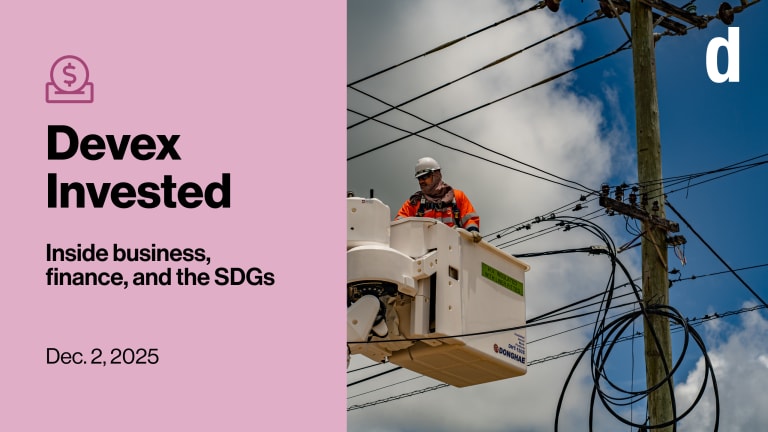
U.S. Secretary of State John Kerry and U.S. Agency for International Development Administrator Rajiv Shah will officially launch on Tuesday the second Quadrennial Diplomacy and Development Review, offering the public a chance to weigh in on the appropriate and effective use of U.S. civilian power abroad while hopefully avoiding some of the pitfalls and turf battles that complicated the last review process in 2010.
The QDDR is billed as “a sweeping assessment” of how the Department of State and USAID can become “more efficient, accountable, and effective in a world in which rising powers, growing instability, and technological transformation create new threats, but also new opportunities.”
As both agencies have been gearing up for the launch for months, Washington, D.C., insiders, too, have been eagerly waiting for more detail on what is now being called QDDR 2.0.
Much of the speculation has focused on how the second review process may vary from the drawn-out and contentious internal debates that led to its predecessor.
The key differences, according to those who have been given a sneak peek, is that QDDR 2.0 is expected to push for more consultation with the foreign aid and NGO community, and focus on fewer issues — like staffing or development finance — than its 2010 predecessor.
More input from the aid community
In February, Thomas Perriello, a former Democratic congressman from Virginia, was appointed special representative for the QDDR, and over the last month, he’s been consulting with various organizations and development experts to hear what they think the new review should focus on.
According to George Ingram, senior fellow at the Brookings Institution who met with Perriello to share his thoughts on what should be included this time around: “It’s clear to me that [he] is central to this process, and that he’s driving it.”
Ingram told Devex the QDDR 2.0 team is aiming to “get their ideas together by the summer” and hopefully release their first report by the fall. In the early stages of the past month or so, the focus has been on outreach and input.
“They appear, more than four years ago, to really be engaging outside communities and listening to what their thoughts are,” Ingram said.
The first QDDR was criticized for not having consulted the foreign aid and NGO community enough, but the Brookings Institution expert noted his early impressions are that Perriello has been particularly attentive to building consultation into the early stages of the new review.
“I’ve been in two sessions with Perriello, and I think he’s doing a nice job of soliciting ideas, listening to them, and giving some feedback … It’s been a constructive give and take that I’ve seen so far,” Ingram said.
Less issues
Many observers expect QDDR 2.0 will focus on a narrower set of issues than its predecessor, and Ingram reported that his early impressions of the process reinforce that approach.
“They’re on a shorter timeframe than last time, they’re looking for a few big ideas and they’re not going through the complicated series of multiple working groups this time,” he said.
For his own part, Ingram suggested to Perriello that the QDDR 2.0 team take on the topic of a “21st century foreign services personnel system” and look more closely at recommendations think tanks have made about “21st century development finance,” in recognition of the bigger role the private sector is expected to play in the post-2015 development agenda.
There have also been calls to build a more robust implementation plan into the review’s findings. At a Center for Strategic International Studies event last November, former U.S. Ambassador to Guatemala James Michel remarked that the 2010 QDDR didn’t feature anything on the State Department website comparable to USAID’s “USAID Forward Progress Report,” which tracks the agency’s performance against indicators established when the agenda was launched.
Former U.S. Secretary of State Hillary Clinton initiated the first review, finally completed in 2010 after numerous delays. Clinton’s mandate was to build on President Barack Obama’s Presidential Policy Directive on Global Development issued that year, which called for the elevation of development as a “core pillar” of U.S. foreign policy — alongside diplomacy and defense.
Among other things, the QDDR sought to clarify roles and improve coordination between the Department of State and USAID, although the review process itself suffered from infighting and what some say was an over-ambitious agenda. It also occurred at the same time USAID was initiating its own reform agenda — USAID Forward — with a brand new administrator bent on bolstering the agency’s internal capacity.
With a more secure and familiar leadership team in place, a more specific focus, and with fewer distractions from similar, simultaneous review and reform efforts, supporters hope QDDR 2.0 will tackle a few of the actionable, tactical challenges that could make USAID and State run more efficiently and work better together.
Read more on U.S. aid reform online, and subscribe to The Development Newswire to receive top international development headlines from the world’s leading donors, news sources and opinion leaders — emailed to you FREE every business day.








